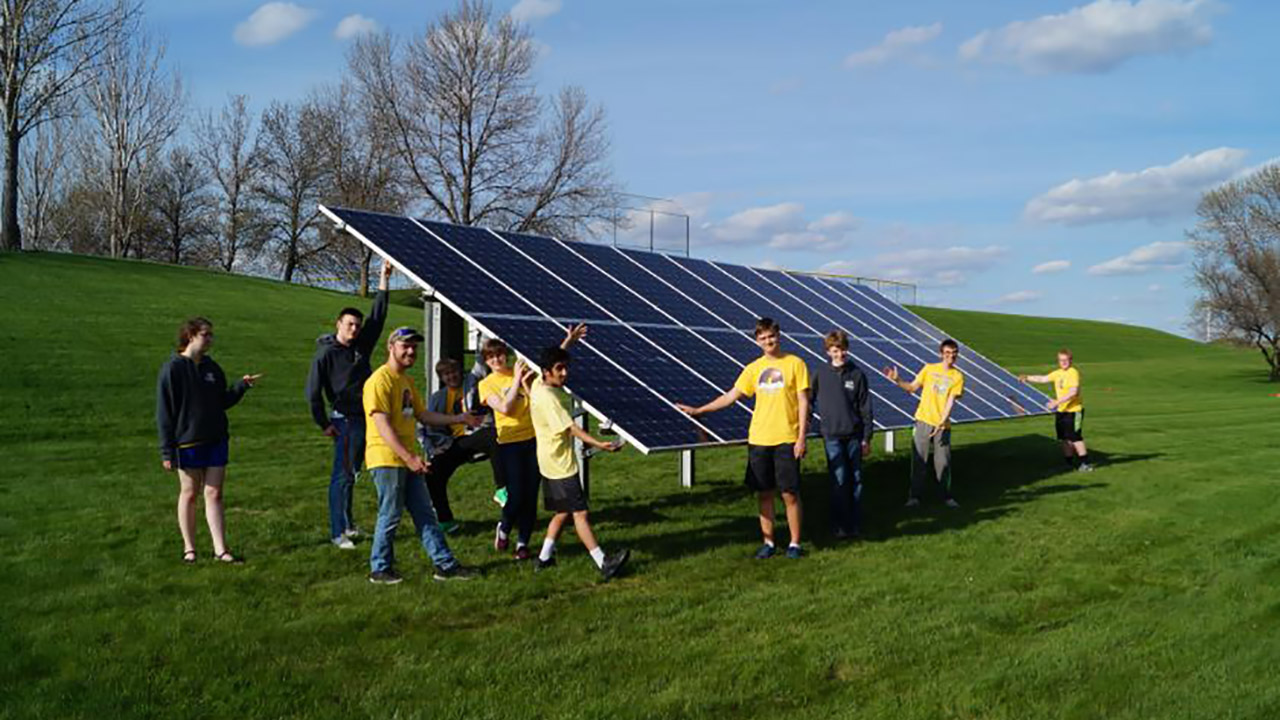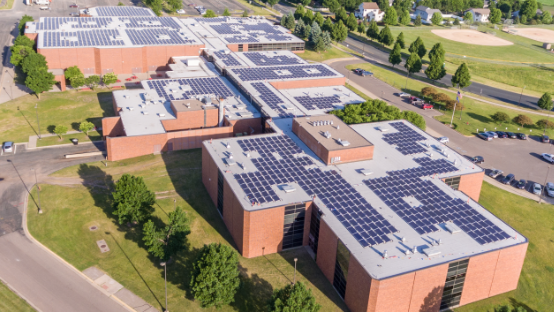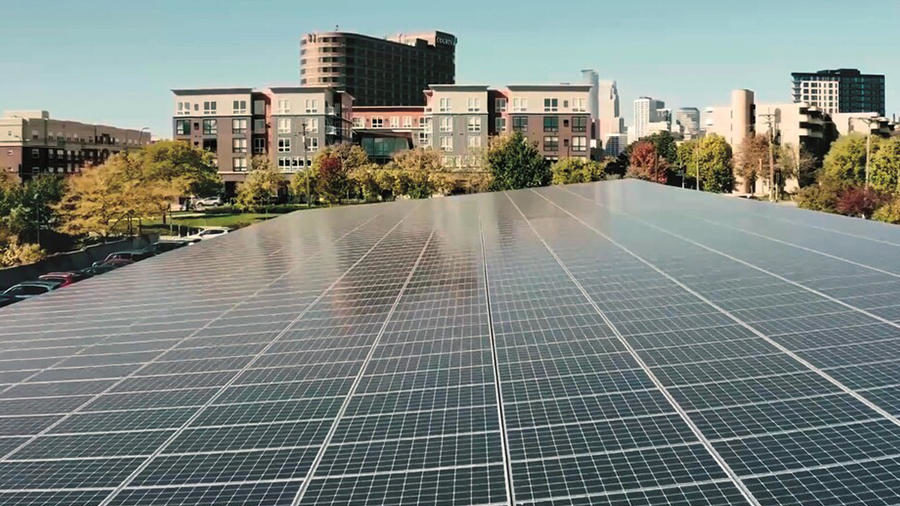
Minnesota is home to over 2,000 public school buildings that not only serve as important educational institutions but possess exciting potential for the future of a clean energy transition in our state. Equipped with flat roofs, large surface area, and minimal tree cover, these public-school buildings are ideal places to install solar energy systems. And starting this year, all schools in Minnesota will have access to a new program designed to make solar more affordable and accessible.
In June 2021, the Minnesota Legislature established a statewide Solar for Schools incentive program which provides financial and technical assistance to schools looking to install solar. The program also requires that schools integrate the solar project into the curriculum and make it a visible learning tool for students and teachers. The program has two tracks: one directed at schools that are Xcel Energy customers, and a second for all other schools in the state. Both programs have a budget of $8 million for K-12 public schools, with an additional $1,242,000 reserved for state colleges and universities. Both tracks of the Solar for Schools program will begin this January 2022.
Xcel territory school solar program

The Xcel Energy track is called SolarRewards for Schools and is a subset of Xcel’s larger SolarRewards program. Fresh Energy was actively engaged in the program design process at the end of 2021, submitting comments to the Department of Commerce recommending incentive levels strike a balance between providing adequate financial assistance to schools and accommodating a larger number of projects under the budget cap.
The final version of the Solar*Rewards for Schools program gives all K-12 schools and state colleges and universities in Xcel territory two forms of financial assistance: a performance-based incentive on the amount of energy the school’s solar system generates, and an up-front payment based on the solar project size and the school’s financial need. The performance-based incentive gives all schools $0.04/kilowatt-hour of energy produced for 10 years, regardless of the school’s system size or financial need. The up-front incentive provides $0.10/watt for non-income qualified schools and between $0.70 and $1.10/watt for income-qualified schools, depending on solar project size. Schools can be “income-qualified” if at least 50 percent of students are eligible for free and reduced-price lunch under the National School Lunch Program. The legislation requires Xcel to reserve 40 percent of the overall program budget for income-qualified schools, ensuring that all schools have access to support under the program.
Statewide school solar program through the Department of Commerce

The statewide program, for all schools that are not Xcel Energy customers, is administered by the Department of Commerce. This track of the program is called the Solar for Schools Grant Program and was finalized and approved at the end of 2021. The Department held several stakeholder sessions and took public comments as it designed the program, and Fresh Energy was an active participant in this process. The final program approved by the Department incorporates our recommendations related to grant size tiers based on school financial need and allowing some flexibility in the one-year timeline for solar installation.
The Solar for Schools Grant Program will offer two request for proposal (RFP) periods each year: the first beginning right away in January 2022 and ending in May, the second in effect from July to November. The Department has established a tiered system for determining the size of grants using two metrics that estimate the tax base per student at a given school or district. Schools can use the Department’s calculations of these metrics to estimate how much financial assistance they can expect to receive for their solar system. The Department is contracting with the Clean Energy Resource Teams (CERTs) to provide hands-on technical assistance to schools as they work through their application for the program. CERTs will help guide schools through the process, helping them understand their energy usage, the interconnection process, net metering, power purchase agreements with third parties, and assist with solar curricula development.
Program potential
Fresh Energy is excited to see how both programs operate over the coming years. We are hopeful that these programs will enable hundreds of Minnesota schools to install solar systems and receive helpful technical assistance to guide them through the process. Installing solar will bring a myriad of benefits to school communities and the state. These benefits will come in the form of reduced energy bills for the schools which will save taxpayer dollars, growth in local renewable energy deployment and associated jobs, decreased emissions from polluting energy sources, and an increased awareness and understanding of renewable energy in communities across the state. Lastly, there are important equity implications built into both programs: in addition to devoting 40 percent of the Xcel budget (totaling $3.2 million) to income-qualified schools, the Department is dedicating over $9 million to solar projects outside of Xcel territory, enabling communities in greater Minnesota to access the economic benefits of solar as well as the Metro area.
Fresh Energy will be following the administration of both programs and will provide additional recommendations and feedback for the Department and Xcel Energy on future program iterations. The establishment of this program showcases the Legislature’s prioritization of increased solar deployment for schools, and we are hopeful many schools across Minnesota will take advantage of these incentive funds this year. If you’re interested in helping your school take advantage of this program, check out program details for Xcel’s program or the Department’s program, and get in touch!
Interested in your clean energy options at home? Here is Fresh Energy’s simple breakdown of the main ways you can cover 100 percent of your electricity usage with clean energy.
